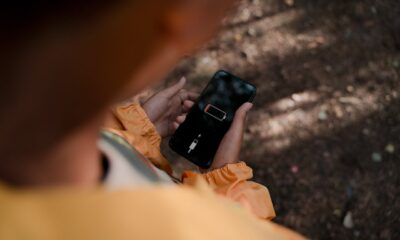Business
New Jersey needs more electric vehicles
The state of New Jersey is putting a stake in the ground. Or rather, a stake through the hearts of taxpayers and citizens. But that’s nothing new.

Governor Phil Murphy recently announced the state government’s goal to reduce carbon emissions 80 percent by 2050, compared with the 2006 levels. That’s great. He plans to do it by massively renovating infrastructure, dramatically changing building codes—and somehow encouraging hundreds of thousands of New Jersey residents to buy electric cars.
That sounds iffy, at best.
The initiative is called the New Jersey Partnership to Plug-In and will be co-led by the New Jersey Board of Public Utilities, New Jersey Department of Environmental Protection, and the New Jersey Economic Development Authority. So, a huge undertaking to shift the state’s economy to a different energy profile won’t have one clear leading entity, but rather three government bureaucracies.
That always works out.
The government hasn’t put a price tag on the infrastructure build-out or increased regulatory costs, but it does think the new move will create some jobs. That seems pretty obvious since it clearly will require lots of new government clerks, administrators, and inspectors, and probably gobs of consultants.
At least in the auto industry, we get a glimpse of the size of the issue.
The governor’s plan calls for adding 330,000 zero-emission vehicles (battery electric vehicles, most likely) to the road between now and 2025. On a straight-line basis, that would mean New Jersey consumers buying 66,000 per year, which is about 5 percent of the total of all new vehicles sold in the Garden State last year. But of those sold last year, only 12,000, or roughly 2 percent, were electric vehicles.
Clearly, something has to change.
Perhaps New Jersey residents will pick up the pace. But buying 150 percent more in 2019? That seems like a stretch. And every year that they don’t take one home means more that must be sold in later years to reach the goal.
Expect the program to run into problems when consumers don’t find the sparky cars as electrifying as the government overlords.
Maybe people like to take trips, so “range anxiety” is more than just a bad feeling. Maybe people don’t want to spend the money on tired designs (see all Tesla models, which were cool, but let’s update a little), or just ugly cars (see every money-saving vehicle by Chevy).

New Jersey plans to reduce its carbon emissions to 80 percent by 2050. (Photo by DepositPhotos)
Sure, the Porsche Taycan is awesome, as are the Jaguar iPace and Audio E-Tron, but those aren’t exactly mainstream vehicles.
In fact, the only mainstream, Middle America car that fits the bill today is the Nissan Leaf, which won’t win any styling awards… at least by sighted people. Functional, yes, but beautiful lines… no.
To make the transition more attractive, the state of New Jersey will have to get creative with incentives and punishment.
Perhaps giving free parking to electric vehicles at sporting events and concerts would help—or requiring gas-powered car drivers to allow electric vehicles to cut in drive-through lines and turn-only lanes. Those might sound fun, but it’s more likely the state will use the age-old cudgel—cash—and pay incentives to buyers while charging higher taxes on those who insist on sticking with “yesterday’s technology.”
But here’s the thing about incentives: Someone has to pay for them. Whatever the state does to entice new electric car buyers, taxpayers will ultimately pay for the gifts, gimmicks, and bribes. Even taxes on current fossil-fuel vehicles, or simply the fuel itself, is borne by the broad citizenry because it captures delivery trucks, service providers, etc., who pass along the cost.
If the state government were really interested in cutting emissions, it could ban all air travel by state employees for government business, demand that all who can work from home stay off the roads, and close major airports like Newark, because air travel is the most polluting way to get around. But all of those are inconvenient and would reflect badly on the government.
So, New Jersey will be stuck with a boondoggle of an initiative that will artificially boost the sale of cars that most people don’t want, while making it more expensive in general to live in the state. That sounds like a typical government plan.
(Featured image by DepositPhotos)
—
DISCLAIMER: This article expresses my own ideas and opinions. Any information I have shared are from sources that I believe to be reliable and accurate. I did not receive any financial compensation for writing this post, nor do I own any shares in any company I’ve mentioned. I encourage any reader to do their own diligent research first before making any investment decisions.

-

 Africa2 weeks ago
Africa2 weeks agoOil Dependence and Economic Resilience: Morocco’s Path to Sustainable Growth
-

 Africa7 days ago
Africa7 days agoBantuHub and L’Archer Group Partner to Invest €1 Million in Congolese Startups
-

 Markets2 weeks ago
Markets2 weeks ago2025 Chaos, Concentration, and the Road to 2026
-

 Business3 days ago
Business3 days agoThe TopRanked.io Weekly Digest: What’s Hot in Affiliate Marketing [Super Partners Review]
























